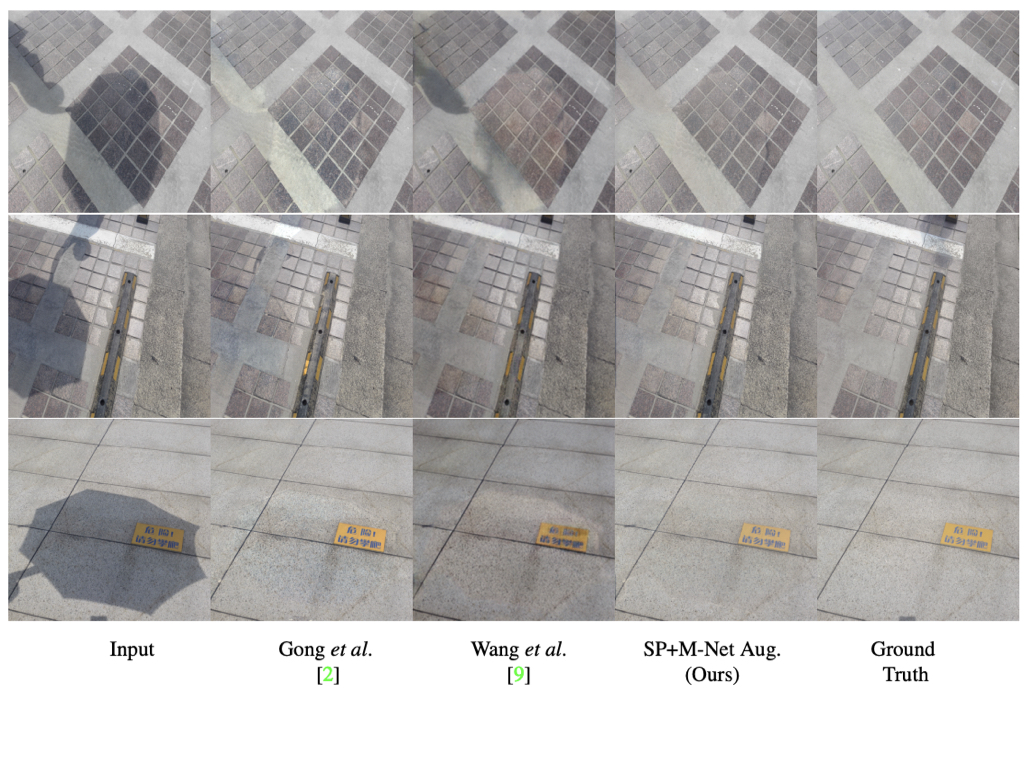Shadow Removal via Shadow Image Decomposition
Stony Brook University

Abstract
We propose a novel deep learning method for shadow removal. Inspired by physical models of shadow formation, we use a linear illumination transformation to model the shadow effects in the image that allows the shadow image to be expressed as a combination of the shadow-free image, the shadow parameters, and a matte layer. We use two deep networks, namely SP-Net and M-Net, to predict the shadow parameters and the shadow matte respectively. This system allows us to remove the shadow effects on the images. We train and test our framework on the most challenging shadow removal dataset (ISTD). Compared to the state-ofthe-art method, our model achieves a 40% error reduction in terms of root mean square error (RMSE) for the shadow area, reducing RMSE from 13.3 to 7.9. Moreover, we create an augmented ISTD dataset based on an image decomposition system by modifying the shadow parameters to generate new synthetic shadow images. Training our model on this new augmented ISTD dataset further lowers the RMSE on the shadow area to 7.4.
Examples

Downloads
Citation
@InProceedings{Le_2019_ICCV,
author = {Le, Hieu and Samaras, Dimitris},
title = {Shadow Removal via Shadow Image Decomposition},
booktitle = {The IEEE International Conference on Computer Vision (ICCV)},
month = {October},
year = {2019}
}